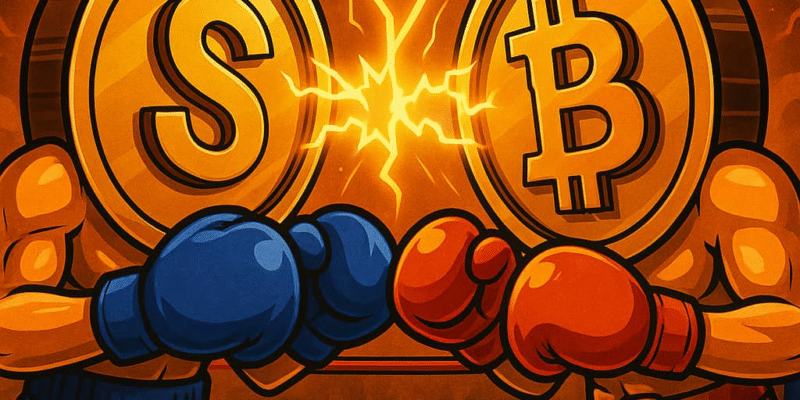In the world of cryptocurrency, two powerful forces are pulling in opposite directions. On one side is Bitcoin, volatile, independent, and born to break the system. On the other are stablecoins, steady, cooperative, and designed to work within it. Both claim to represent the future of money, but their visions couldn’t be more different.
Bitcoin didn’t ask for permission. It was created in 2009 as a response to the failures of traditional banking. It has no central authority, no customer service line, and no national flag. It’s global, permissionless, and capped forever at 21 million coins. For its supporters, Bitcoin is digital gold, scarce, neutral, and outside the reach of governments. It’s a hedge against inflation, a way to escape capital controls, and a bet on long-term independence.
Bitcoin is also wildly unpredictable. Its price can swing 10% in a day. It’s been called both a revolutionary asset and a speculative bubble. That volatility has made it attractive to investors, but hard to use as a regular currency. Buying a cup of coffee with Bitcoin? You might be paying double tomorrow or getting a bargain, no one knows. As for governments? They’re still not sure whether to embrace it, regulate it, or ban it outright.
Now Stablecoin on the other hand is the quieter but more pragmatic cousin in the crypto family. Unlike Bitcoin, stablecoins aren’t trying to overthrow the system. They’re trying to upgrade it. These digital tokens are pegged to real-world currencies like the U.S. dollar or the euro. They don’t aim for freedom from fiat, they replicate it in digital form. That’s their promise, stability, speed, and compatibility.
In practice, stablecoins are everywhere. They’re used for cross-border payments, online shopping, remittances, payroll, even decentralized finance (DeFi) applications. You don’t see headlines about stablecoins jumping 40% overnight and that’s exactly the point. They’re not built to spike, they’re built to stay put. However, stable doesn’t mean simple. While Bitcoin runs on a fully decentralized network, most stablecoins are issued by companies or platforms that hold reserves in dollars, bonds, or other assets. That introduces trust, and wherever trust enters the picture, so do questions. Are those reserves really there? Are they audited? Can the issuer freeze your funds? In other words, stablecoins offer stability but they ask for faith in institutions.
That makes them more appealing to regulators. Governments who see Bitcoin as a threat often see stablecoins as tools. In the U.S., lawmakers are pushing for laws like the GENIUS Act to regulate stablecoin issuers. The European Union and China are exploring central bank-backed digital currencies. Even some African countries are piloting local-currency stablecoins to improve financial access.
This cooperation comes with consequences. Most stablecoins today are backed by U.S. dollars. That’s great for dollar dominance, but troubling for countries trying to reduce their dependence on the greenback. It raises a big question, are stablecoins making finance more decentralized or simply reinforcing existing power structures in digital form?
So here we are, Bitcoin is loud, defiant, and unpredictable, it breaks the rules. Stablecoins are quiet, predictable, and increasingly regulated, they follow the rules. One is about financial freedom. The other is about digital efficiency. They don’t just represent two technologies, they represent two philosophies. They’re not necessarily enemies. In fact, the future of crypto may need both. Make no mistake, they are in competition, for trust, for usage, and for influence over how the next generation of money will work.
In that race, the question isn’t just who will win. It’s who we’re willing to trust to hold the keys to the future of money.

Comments